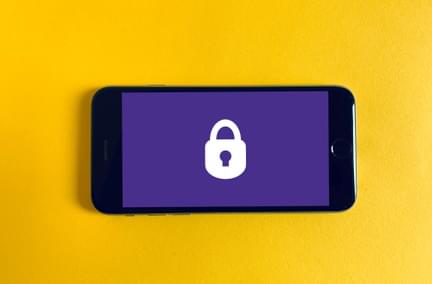How to Retrieve Lost Files on Various Devices
Mar 27, 2025 | Helpful Tips, Cyber Security, Digital Literacy

OMG, wait! Come back! We’ve all done it: deleted a file by mistake. Oops! You thought you didn’t need it anymore or accidentally clicked Delete. Now what?
How do you recover a file that appears to be lost and gone forever?
First things first -- don’t panic. It’s highly unlikely the file is actually gone. It’s probably just moved to a temporary location and can be brought back to life with a few key commands. You just have to know which ones, which is what this post is for.
Losing important files can be stressful no matter how they get lost, whether due to accidental deletion, formatting errors, or malware (yikes!). Fortunately, there are numerous ways to recover seemingly lost files across different devices, including Windows PCs, Macs, and external storage devices. Let’s walk through the recovery process using tools and features like File History, Recycle Bin, and data recovery software.
Recovering Deleted Files on Windows PCs
Microsoft Windows has a built-in multi-step process for deleting files that prevents them from being permanently deleted automatically. You have to really work at it to get rid of a file forever. Hitting Delete once typically won’t do it. The files are usually still on your computer, just in another location. Here’s how to retrieve them.
1. Check the Recycle Bin
The Recycle Bin is where the deleted file probably went. Check there first. Looking there is often the first stop for recovering deleted files:
Open the Recycle Bin from your desktop or the Start menu.
Locate the file by its name or type.
Right-click on the file and select Restore to return it to its original location.
This should do the trick so you can breathe easy again. However, if you’ve already emptied the Recycle Bin, there is still hope. Proceed to other recovery methods.
2. Use File History
File History is a built-in feature in Windows 10 and newer versions that backs up files automatically:
Go to Start > Settings > Update & Security > Backup.
Click More options and select Restore files from a current backup.
Browse through the available backups and click Restore to recover your file.
You can also right-click the folder in File Explorer where the file used to live and choose “Restore previous versions” if File History is enabled.
3. Windows File Recovery Tool
For permanently deleted files, Microsoft offers the Windows File Recovery tool:
Download it from the Microsoft Store.
Open Command Prompt as an administrator and run commands like:
text
winfr C: D: /extensive
Replace C: with the drive where the file was lost and D: with the recovery destination.
4. Third-Party Software
Outside tools can also help recover lost files. Tools like Recuva or Disk Drill can recover files from formatted drives, SSDs, HDDs, USB flash drives, and SD cards. Simply install the software, scan your storage device, and restore lost files. The software will walk you through the process.
Recovering Files on Mac
Like Windows, Apple’s macOS has processes that prevent accidental permanent deletion of files by incorporating an intermediate step that requires deliberate action to remove files forever.
1. Check the Trash
Deleted files often go to the Trash, the little trashcan icon in the Dock that looks like it's full of paper wads when there are deleted files inside. To retrieve them:
Open the Trash bin.
Locate your file and right-click it.
Select Put Back to restore it to its original location.
2. Time Machine Backups
Alternatively, Time Machine is an excellent tool for recovering lost files on macOS:
Open Time Machine from Launchpad or System Preferences.
Navigate through backups using the timeline.
Select your file and click Restore.
3. Data Recovery Software for Mac
If backups are unavailable, use software like EaseUS Data Recovery Wizard or Disk Drill:
Scan your storage device for lost files.
Filter results by file name or type.
Preview and recover your selected files.
Recovering Files from External Storage Devices
External hard drives, USB flash drives, SD cards, and other storage devices are prone to accidental formatting or corruption. Here’s how to recover data:
1. Use Built-In Tools
For Windows:
Use Command Prompt with commands like chkdsk to fix file system errors or attrib to reveal hidden files.
For Mac:
Use Disk Utility to repair corrupted drives before attempting recovery.
2. Recovery Software
Software like Disk Drill supports external storage devices:
Connect your device to your computer.
Scan for lost data.
Recover files to a different location to avoid overwriting.
Cloud Storage Recovery
If you use cloud storage services like OneDrive or Dropbox:
Log into your account.
Check the “Recycle Bin” or “Deleted Files” section within the app.
Restore your files directly to their original location or download them anew.
Tips for Successful File Recovery
Set yourself up for file recovery success with the following:
Enable backups: Regularly back up important data using tools like Windows Backup, Time Machine, or cloud storage services.
Be cautious with malware: Run antivirus scans if you suspect malicious activity caused data loss.
Avoid overwriting: Stop using the affected drive immediately after noticing data loss.
With these methods and tools, whether using a Windows PC, Mac, or external storage device, you can confidently tackle most data recovery scenarios. At Gateway Fiber, we’re committed to keeping you connected—including helping you stay in control of your digital life!
- data recovery
- file recovery
- deleted files
- disk drill
- recuva
- windows
- MacOS




